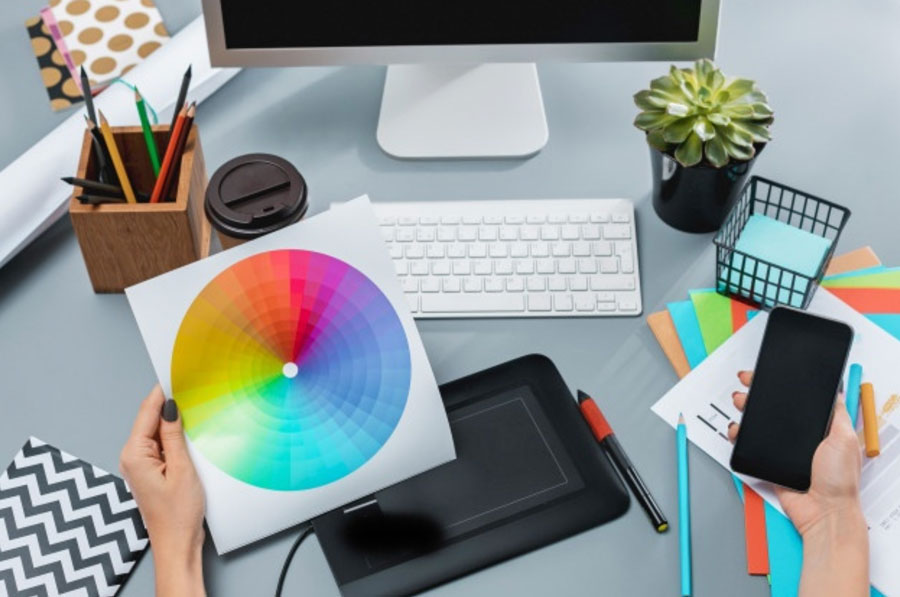The UX/UI design of every digital product has its own rules, and web design is no exception. These are simple basic concepts of Web Design that are part of the training of every professional UX design company. They will help anyone who wants to design websites and web applications. The recommendations that you will find in this post will aid you in approaching the subject for the first time and creating your first website, even with zero web design experience.
Getting Started With Graphics
As a UX/UI designer, you know that our eye perceives and makes assumptions much faster than our minds, so it’s very important that the interface broadcasts a general impression of order, balance, and clarity in your web design. These are the basics for effective communication and, so-to-speak, establishing contact with our user:
- The first thing will be choosing an effective color palette. There is a science that lies behind color choice. The colors transfer meaning just like in other kinds of design. However, if you’re not too well versed on the matter, you can use tools that generate color palettes automatically.
- The images on the site are worth as much of your attention as your content. They must be relevant to the copy and illustrate the information effectively. The ideal would be to use personal images, which really speak volumes about you and your company. However, if you do not have good quality images at hand, avoid bad compromises that would give off an inexorable sloppy tone to your website.
- Do not steal images randomly from the net. Pay attention to the copyrights or buy images from stock sites (now there is a huge choice even at very reasonable costs). However, if you work with large corporations and international companies, you or your company might want to invest in a designer or photographer.
Choose the “Right” Fonts
Too many websites use non-standard fonts that not every device can read. Fonts play a very important role for your website: they can give impact and personality to your graphic composition as well as highlight your communication. But each font behaves differently on each browser and operating system. Some are easily readable on all systems, others are not. Try using universally supported standard fonts. And remember to limit their number on your website: too many fonts gives the annoying impression of disorder that you absolutely do not want to convey.
Working With the Layouts
The layout of the website must be consistent and orderly. Of course, if you’re a talented designer and feel like experimenting, you do you. But if you’re looking for user contact (your potential customers!), having a confusing website is a luxury that you cannot afford.
Above all else, be careful about keeping the navigation of your website clear and evident, in the same position on the page and with the same structure. Do not make the user struggle to find information: they will certainly not have the necessary patience. You can study the examples prepared by professional UX/UI designers for practical guidance and inspiration.
Technical Precautions
Each user connects to the Internet from their own device, each different in terms of settings, software, hardware, and operating system. So you need to test your website on different browsers and operating systems. Of course, purchasing all possible operating systems and hardware is quite expensive and unlikely. But you can use services like Browserstack to make the necessary tests without spending a small fortune. There is also a free trial period which will be more than enough if you don’t develop websites professionally.
It is not necessary to test every possible configuration: experiment with the most popular operating systems and the most recent browsers. But don’t be too restrictive. You may also be able to help yourself by consulting the access statistics for your current website if you have one.
Conclusion
Remember that users are the real target audience of your website. Each decision must be made with their expectations in mind, which are essentially usefulness, clarity, and accessibility of the information they are looking for. You will never spoil your user enough: the least you can do is offer him a website that is easy to find, quick to download, intuitive to navigate, useful, and rich in content. The rest basically comes by itself.




